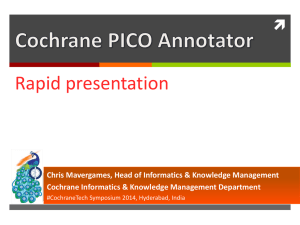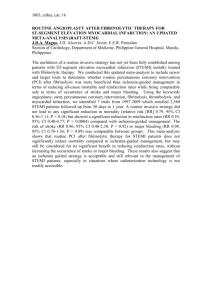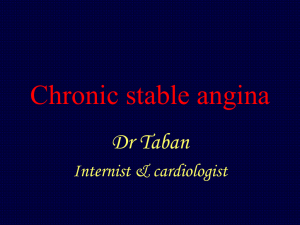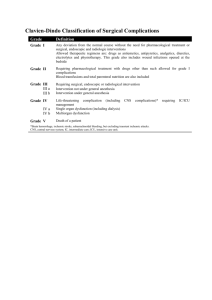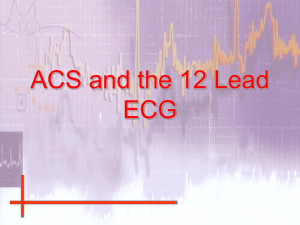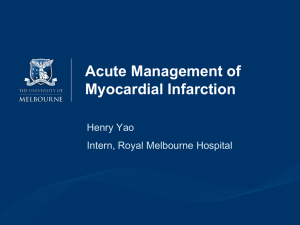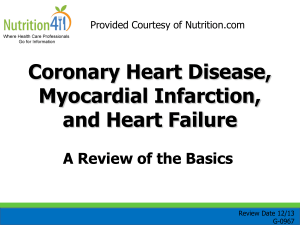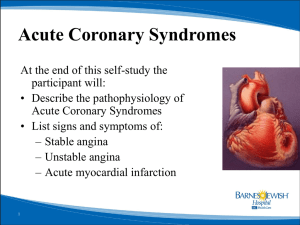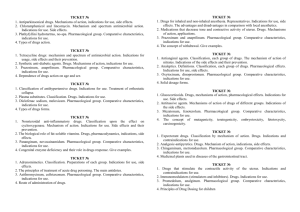Outline Objectives
advertisement
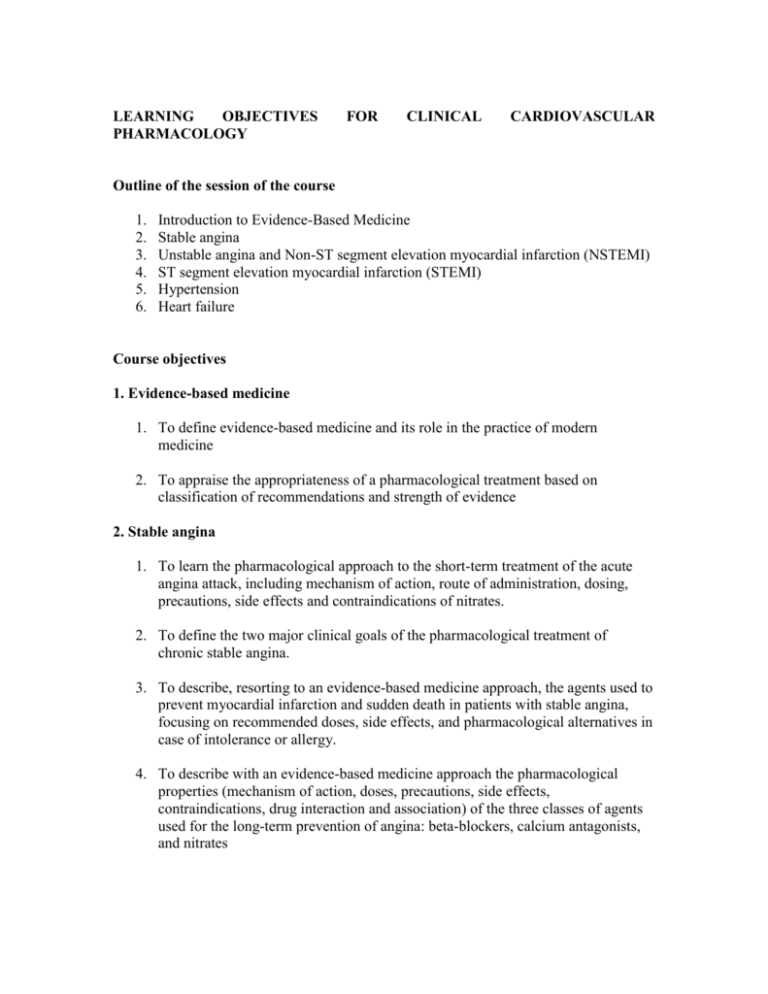
LEARNING OBJECTIVES PHARMACOLOGY FOR CLINICAL CARDIOVASCULAR Outline of the session of the course 1. 2. 3. 4. 5. 6. Introduction to Evidence-Based Medicine Stable angina Unstable angina and Non-ST segment elevation myocardial infarction (NSTEMI) ST segment elevation myocardial infarction (STEMI) Hypertension Heart failure Course objectives 1. Evidence-based medicine 1. To define evidence-based medicine and its role in the practice of modern medicine 2. To appraise the appropriateness of a pharmacological treatment based on classification of recommendations and strength of evidence 2. Stable angina 1. To learn the pharmacological approach to the short-term treatment of the acute angina attack, including mechanism of action, route of administration, dosing, precautions, side effects and contraindications of nitrates. 2. To define the two major clinical goals of the pharmacological treatment of chronic stable angina. 3. To describe, resorting to an evidence-based medicine approach, the agents used to prevent myocardial infarction and sudden death in patients with stable angina, focusing on recommended doses, side effects, and pharmacological alternatives in case of intolerance or allergy. 4. To describe with an evidence-based medicine approach the pharmacological properties (mechanism of action, doses, precautions, side effects, contraindications, drug interaction and association) of the three classes of agents used for the long-term prevention of angina: beta-blockers, calcium antagonists, and nitrates 3. Unstable angina (UA) and non ST-segment elevation myocardial infarction (NSTEMI) 1. To define the twin goals of the management of UA and NSTEMI 2. To describe following an evidence-based medicine approach indications, side effects, contraindications and drug association of the pharmacological agents used for achieving prompt relief of ischemia (nitrates, beta-blockers, morphine, calcium antagonists) 3. To learn the clinical use and recommendations of the three classes of antiplatelet drugs (ASA, thienopyridines and GP IIb/IIIa antagonists) used in the treatment of UA/NSTEMI 4. To illustrate the clinical relevance of the anticoagulant therapy by means of indirect (unfractionated heparin, and low molecular weight heparin) and direct (e.g. hirudin) thrombin inhibitors 5. To outline the different pharmacological strategy in patients with UA/NSTEMI planned for a non-interventional approach or undergoing PCI ST segment elevation myocardial infarction (STEMI) 1. To learn, with an evidence-based medicine approach, clinical relevance, indications, untoward effects, contraindications and association of oxygen, nitrates, beta-blockers, and morphine in the early treatment of patients with STEMI 2. To delineate the role of aspirin and clopidogrel 3. To delineate the differences in pharmacological approach for patients with STEMI admitted to hospitals with and without PCI capability 4. To describe indications and contraindications of thrombolytic agents 5. To gain knowledge of the role of ancillary therapy in patients with STEMI Hypertension 1. To describe the “life style changes” recommended in pre-hypertensive and hypertensive patients 2. To learn about the selection process of the most adequate drug(s) to use for the pharmacological treatment of hypertensive patients without compelling indications 3. To explain advantages and disadvantages of multidrug combination therapy in hypertensive patients irresponsive to a single drug approach 4. To define the pharmacological treatment of hypertension associated with compelling indications such as cardiac ischemia, heart failure, diabetes, left ventricular hypertrophy, peripheral artery disease, elderly, pregnancy, and breastfeeding. Heart Failure 1. To describe and differentiate the pharmacological approach to the ingravescent four stages of heart failure 2. To outline indications, contraindications, most common side effects and feasible drug association of the pharmacological agents used for the different stages of heart failure 3. Te learn the pharmacological approach to the treatment of heart failure and normal left ventricular systolic function (diastolic dysfunction) 4. To explain, based on a pathophysiological approach, drug selection and association in the treatment of patients with acute pulmonary congestion
